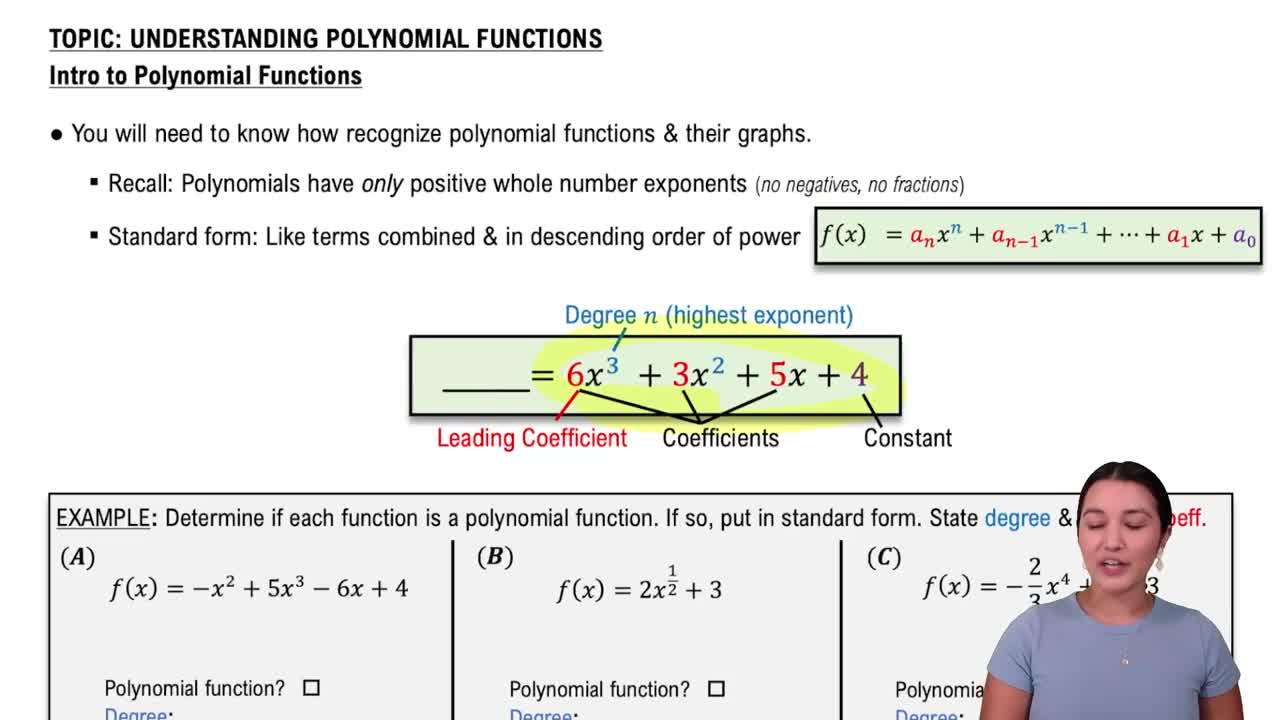Here are the essential concepts you must grasp in order to answer the question correctly.
Polynomial Functions
A polynomial function is a mathematical expression involving a sum of powers in one or more variables multiplied by coefficients. The degree of the polynomial is determined by the highest power of the variable. Understanding the structure of polynomial functions is essential for analyzing their roots, which can be real or complex.
Recommended video:
Introduction to Polynomial Functions
Complex Zeros
Complex zeros of a polynomial are the values of the variable that make the polynomial equal to zero, which can include both real and non-real (complex) numbers. According to the Fundamental Theorem of Algebra, a polynomial of degree n has exactly n roots in the complex number system, counting multiplicities. Identifying complex zeros often involves factoring or using the quadratic formula.
Recommended video:
Factoring Polynomials
Factoring polynomials involves expressing the polynomial as a product of simpler polynomials or linear factors. This process is crucial for finding the zeros of the polynomial, as the zeros correspond to the values that make each factor equal to zero. Techniques such as synthetic division, grouping, or applying the Rational Root Theorem can aid in the factoring process.
Recommended video:
Introduction to Factoring Polynomials
 Verified step by step guidance
Verified step by step guidance


